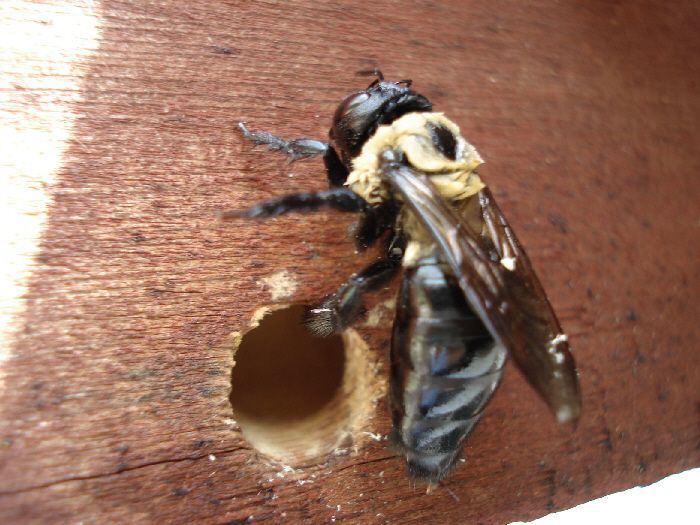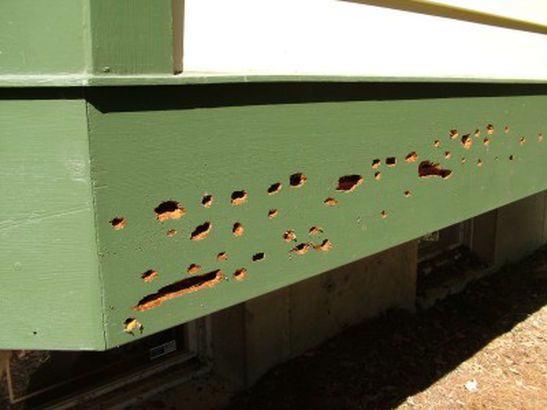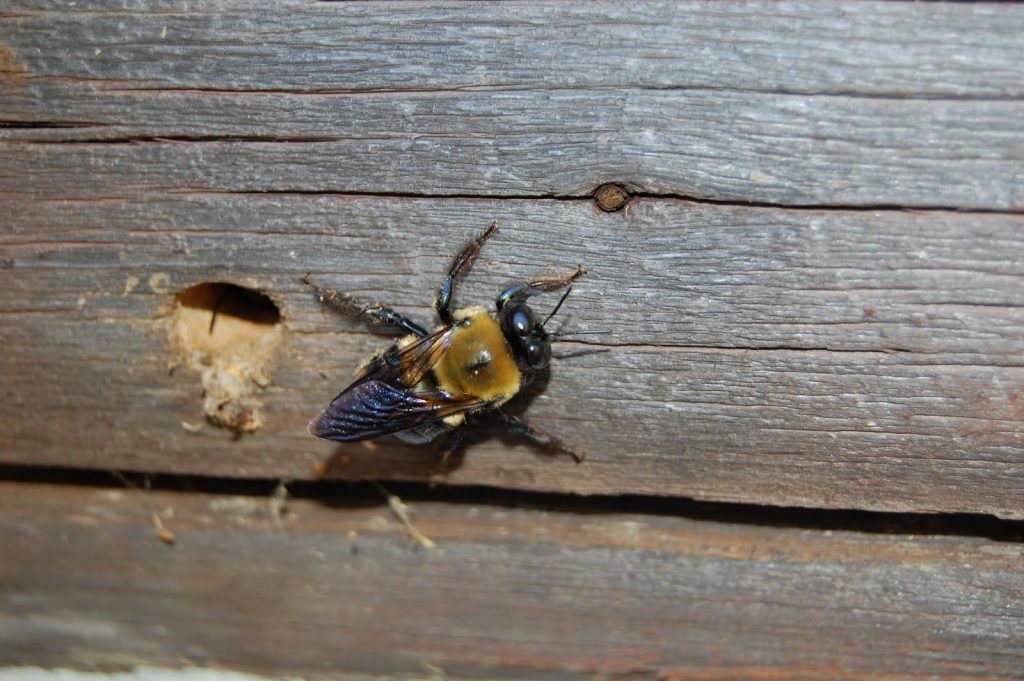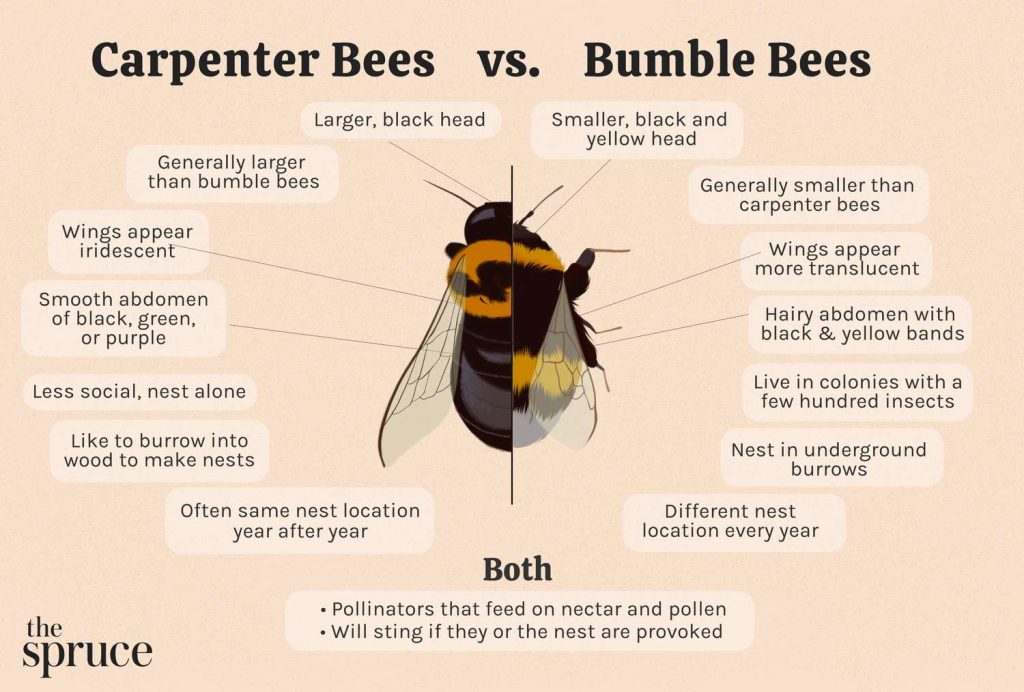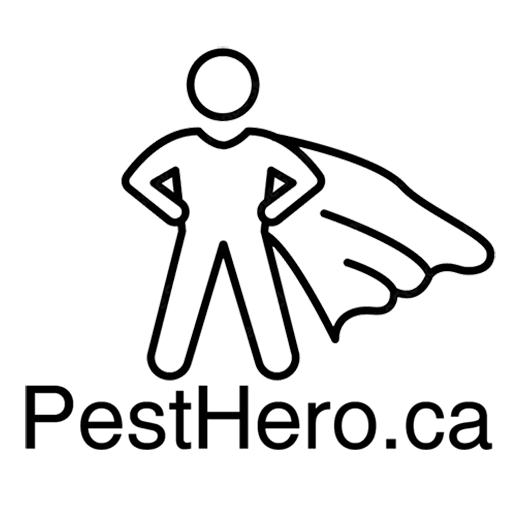CARPENTER BEES
Carpenter bees are easy to identify with their shiny black abdomens and fuzzy yellow thoraxes. These bees range from 19 to 25 mm in length, with males sporting a distinctive yellow patch on their faces, while females have solid black faces. Remember, only females can sting, and they’re generally non-aggressive unless provoked.
Signs of an Infestation
If you see large bees hovering around wood structures, it’s a sign of carpenter bee activity. Males may seem aggressive, but they’re more interested in guarding their nests than bothering you. Look for piles of fine wood shavings beneath nest entrances—another telltale sign of these wood-burrowing bees.
Preventing Carpenter Bee Invasions
While carpenter bees play a vital role in our ecosystem, it’s best to keep them at bay. Instead of resorting to pesticides, consider painting or varnishing your wood surfaces, as these bees prefer untreated wood. You can also place wooden slabs away from your home to give them a more appealing nesting option.
Habitat, Diet, and Life Cycle
Carpenter bees love to burrow into wooden structures like decks, fences, and furniture, especially in untreated softwoods like cedar and pine. They don’t eat wood; instead, they thrive on nectar and contribute to pollination—though they sometimes cheat by biting into flowers without pollinating.
These bees overwinter in their tunnels and emerge in spring to mate. Females lay six to eight eggs in burrows filled with “bee bread,” a mix of pollen and nectar. The entire life cycle—from egg to adult—takes about 36 days, and they can live up to three years!
Common Questions
Why are carpenter bees in my yard?
Carpenter bees prefer nesting in soft, weathered wood, making your deck or porch a prime target. They create individual nests rather than colonies, so a few bees can lead to significant damage over time.
Should I be concerned?
While a single carpenter bee may cause minor cosmetic damage, untreated infestations can lead to serious structural issues as they expand their tunnels. Plus, their aggressive flying can be alarming, even if they rarely sting.
If you suspect a carpenter bee invasion, don’t wait! Contact us today for expert pest control solutions that keep your home safe and sound.
